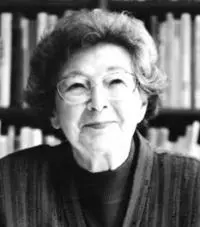On the cusp of Ghostbusters' release, now is a good time to consider when men write women versus when women write women. In a male-dominated industry, both Hollywood and the publishing world, it's common that even powerful women in fiction are written by men. In the case of Ghostbusters, writer/director Paul Feig, who has a history with female-driven stories such as Bridesmaids (2011), The Heat (2013) and Spy (2015), collaborated with Katie Dippold (Parks and Recreation) on the script.
That balance is precarious, however, and it's fascinating to bisect how women are portrayed by men and how women portray themselves. With that in mind, there's no better examples than Ramona and Her Father (1977) by Beverly Cleary and A Head Full of Ghosts (2015) by Paul Tremblay.
Ramona Quimby is a precocious girl always getting into trouble. Over seven books she is outspoken and tends to bug her older sister Beezus, but has the best of intentions. A Head Full of Ghosts bears superficial, but provocative, similarities to the fourth book in the series, Ramona and Her Father. Told from the point of view of eight-year-old Merry Barrett, it follows her family as 14-year-old sister Marjorie exhibits signs of mental illness that are misinterpreted as demonic possession. Or are they? The family agrees to a reality show and tragedy ensues, while 15 years later Merry attempts to reconcile her past and present self.
Cleary was inspired by her work as a children's librarian and the insistence by young children that they couldn't find relatable characters in books.Tremblay, by contrast, is very different from Cleary. He has a master's degree in mathematics, taught high school and coached junior varsity basketball. Although he worked with children, he certainly has never been an adolescent girl.
So what do the authors and their works have in common, and what does this have to do with Ghostbusters? First of all, there's the sisters and their age difference. Their dynamic is comparable, as well, as is the family power structure with the struggling dad and frustrated mother. But there is the little matter of genre, of course, and intended audience with Ramona and Her Father aimed at middle schoolers and A Head Full of Ghosts very much for adults.
And there's the question of “allies”. When it comes to feminism, men who fight for women's rights are considered allies, but it's a fine line. When does it become patronizing?
There's no denying that there's a feminist heart in both Ramona and Her Father and A Head Full of Ghosts, but the difference is one is unintended while the other is very purposeful. It's not to say that Cleary couldn't have considered herself a feminist. It was, in fact, a household term by 1913. But when first writing the books there wasn't a political agenda. Instead the powerful themes arose from simply telling an inspirational and aspirational story for young girls. Tremblay, meanwhile, confronts sexuality and patriarchal control, especially from religious authority, accompanied by a covert meta-commentary by modern-day Merry.
Ramona as feminist icon seems a stretch, but take it from one of the best modern female writers, Amy Poehler, in the 2016 re-release of Ramona Quimby, Age 8 (1981): “In today’s world, where people are always searching for ‘strong female characters,’ Mrs. Cleary was ahead of her time. Ramona was a pest! She was irascible and uncompromising! She was allowed to be angry and was not afraid to stand up to boys!” This highlights how important the character has been for generations of women and that importance stems from Ramona being portrayed as a person.
That humanity shines through in the failings of Cleary’s characters. There isn't much of a driving plot in Ramona and Her Father so much as episodic vignettes reflective of changing times. “The social upheaval of the 1960s,” says Anita Silvey in The Essential Guide to Children’s Books and Their Creators (2002), “had a dramatic impact on middle-level fiction.” That is dramatized in the throughline of her father getting laid off and her mom having to get a job and the resulting problems: broken-down car, home-renovation loan, unpaid mortgage, a bad smoking habit and depression from having to do housework. And Cleary’s greatest strength is, as Laura Vanderkam puts in her 2010 article “Ramona and the Middle-Class Squeeze”, “her complete lack of sentimentality as she wrote one of the best portrayals, ever, of an American family’s wrenching journey into the modern economy.”
And that’s exactly what was going on during the 1973-1975 recession that informs the book, but Cleary doesn’t lose her young protagonist’s perspective amidst the very adult concerns. Take, for instance, her role as a sheep in the school Christmas pageant. This ties into how her mom’s job cuts into time to sew the costume, and Ramona is forced to wear pajamas instead. But ultimately it’s about little victories: the sheep steal the show, and the family finds happiness. It’s that everyday courage that is at the heart of Cleary’s unsentimental writing, as her characters accept their limitations and embrace what life hands them.
 Tremblay takes a very different tack, however, with A Head Full of Ghosts. It’s remarkable how similar the Barrett family is to the Quimbys, to the point it can’t be a coincidence. John Barrett loses his job at a local factory, and although wife Sarah is able to keep the family afloat with a bank teller’s salary, that all falls apart when Marjorie shows signs of schizophrenia. After regular visits with a psychiatrist fail to effect change, John, who has rediscovered his Catholic faith, brings a priest in to see Marjorie and it’s decided that an exorcism will be performed. Word travels to higher-ups who get them the reality show The Possession, and the pieces are in place for a dark and twisted tale.
Tremblay takes a very different tack, however, with A Head Full of Ghosts. It’s remarkable how similar the Barrett family is to the Quimbys, to the point it can’t be a coincidence. John Barrett loses his job at a local factory, and although wife Sarah is able to keep the family afloat with a bank teller’s salary, that all falls apart when Marjorie shows signs of schizophrenia. After regular visits with a psychiatrist fail to effect change, John, who has rediscovered his Catholic faith, brings a priest in to see Marjorie and it’s decided that an exorcism will be performed. Word travels to higher-ups who get them the reality show The Possession, and the pieces are in place for a dark and twisted tale.
So there’s the sisterly relationship and the financial situation. The father losing his job is indicative of the Great Recession, a demonstration of how time is a flat circle, and his role as breadwinner getting shifted to the mother is also fascinating in how things haven’t changed much since the 1970s. Merry’s perspective and behavior is not unlike Ramona, as well, as she’s rambunctious and prone to dominate situations, and a bit of a tomboy with her love of soccer and shows about hunting Bigfoot.
Obviously where A Head Full of Ghosts differs from the Ramona series is in its horrific elements. It’s not so much that Tremblay lifts from Cleary’s work as Cleary established a template that has influenced fiction about the young girl experience ever since. So the closeness of the two sisters that is concurrent with their combative drifting apart as Marjorie develops into a teenager can’t help but homage Cleary, that’s how ingrained Ramona is on the collective unconscious.
But like its other obvious templates, Charlotte Perkins Gilman's “The Yellow Wallpaper” and The Exorcist, A Head Full of Ghosts critiques how men chalk up women’s feelings to “hysteria” and also uses demonic possession as a metaphor for everything from puberty to blossoming sexuality to parents fearing an uncontrollable next generation. A Head Full of Ghosts subverts The Exorcist, however, by placing the point of view firmly in the female corner, with Marjorie questioning the actions of her father and the priests, and Merry providing both the young girl and more mature perspective. As Tremblay puts it in an interview with Bull Spec:
I don’t know if you can call it a sub-plot or a sub-theme, but I really wanted to address the history of horror, and some of its bad history – in particular, the exorcism/possession story, which on a lot of levels is very misogynistic, and I wanted to try to have a feminist or a woman’s viewpoint, and to talk about, for example, the sexualization of a 14 year old girl. Which is essentially what happens in The Exorcist and a lot of other possession movies. Just the idea of the literal patriarchy – religious white men come in and save the little girl who can’t help herself.
So Cleary writes from her life experience and the consequence is natural and subtle in its encouragement of young girls. Tremblay, on the other hand, indicts hegemonic institutions, from the impotent posturing of fathers to the ineffectual advice of psychiatrists, from the opportunistic scheming of priests to malevolent advice from thinly-veiled Westboro baptists. He wants to be an ally, even namedropping the likes of feminist scholar Laura Mulvey (”Visual Pleasure and Narrative Cinema”) in adult Merry's blog. But he also tears a rift between Marjorie and Merry, with the former manipulating her sister into a horrible act. There can be no strong female bonds here, only shattered childhoods and a yearning for familial connection.
 So where does that leave Ghostbusters? Only what can be gleaned from the previews, the press and history. On the last point, Feig started off creating shows like Freaks and Geeks, with powerful female characters like Lindsay, but also writing books like Superstud: Or How I Became a 24-Year-Old Virgin (2005), very much about his experiences as a man. Being a feminist ally, if one can interpret the last five years of his cinematic output as such, is something he’s come to late. The movie itself doesn’t look to avoid jokes about their femininity but it also doesn’t lean into them (unless you consider a proton pack blast to a ghost’s crotch as pandering to women).
So where does that leave Ghostbusters? Only what can be gleaned from the previews, the press and history. On the last point, Feig started off creating shows like Freaks and Geeks, with powerful female characters like Lindsay, but also writing books like Superstud: Or How I Became a 24-Year-Old Virgin (2005), very much about his experiences as a man. Being a feminist ally, if one can interpret the last five years of his cinematic output as such, is something he’s come to late. The movie itself doesn’t look to avoid jokes about their femininity but it also doesn’t lean into them (unless you consider a proton pack blast to a ghost’s crotch as pandering to women).
It is strange that this is where many have chosen to take their stand. 2016’s Ghostbusters is more likely than not the confluence of random events, namely Paul Feig’s tendency to work with a certain group of actresses (Melissa McCarthy, Kristen Wiig) and their popularity at the moment. Also, as Feig puts in an interview with Wired, ‘But I thought if I could cast all the funny women I know, it would be a nice way to avoid comparisons to the original iconic cast—so you’re not saying, “Oh, is that character supposed to be Venkman?”’
The movie wasn’t conceived with an ax to grind, but instead reflects inherent stereotypes. Namely, that a movie like Ghostbusters (1984), with four male leads, is just a movie while Ghostbusters (2016) with four female leads is a “female movie”. Likely Feig and Dippold didn’t ask for this fight, but faced with unavoidable knee-jerk reactions from the public they’re damned if they do, damned if they don’t.
There’s no easy answer. Cleary spent 40 years of her life writing a relatable, one-of-a-kind character that young girls could look up to, but without an overt political message. Tremblay tackled head-on the hypocrisies of man’s world, but his cynicism leads to a nihilistic message that all people, even sisters, will betray one another. And even when men and women work together, like with Ghostbusters, to tell a story about women that isn’t necessarily a women’s story, they face the ire of a fan base that sees invisible strings being pulled.
Cleary bore the weight of feminism by leading by example while Tremblay’s support deals it a blow. Ghostbusters, however, is more than likely just a fun time at the movies with the bad luck of people’s assumptions hyping it up as something it’s not.

About the author
A professor once told Bart Bishop that all literature is about "sex, death and religion," tainting his mind forever. A Master's in English later, he teaches college writing and tells his students the same thing, constantly, much to their chagrin. He’s also edited two published novels and loves overthinking movies, books, the theater and fiction in all forms at such varied spots as CHUD, Bleeding Cool, CityBeat and Cincinnati Magazine. He lives in Cincinnati, Ohio with his wife and daughter.







